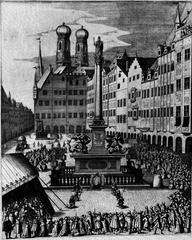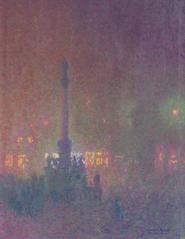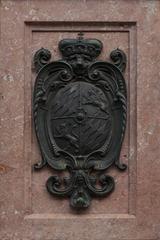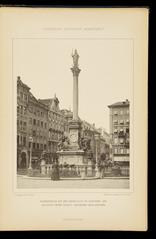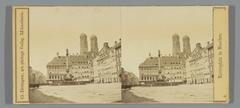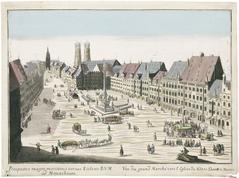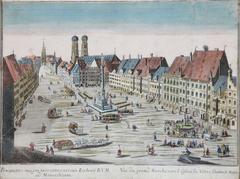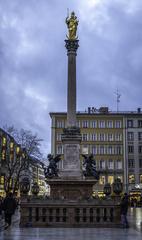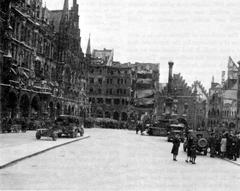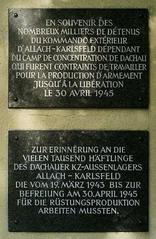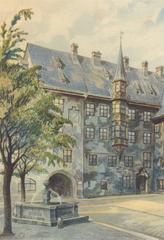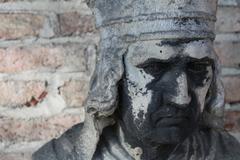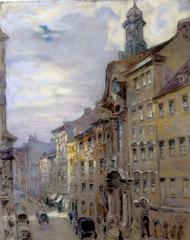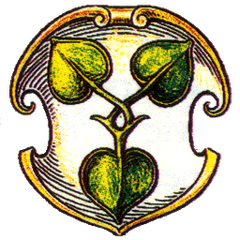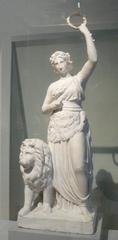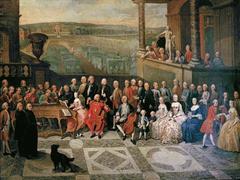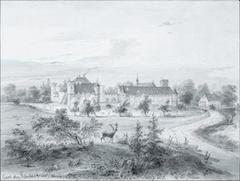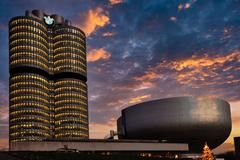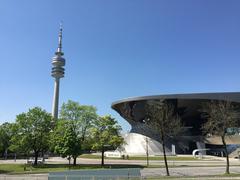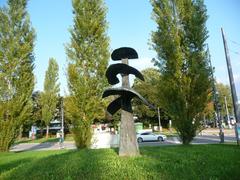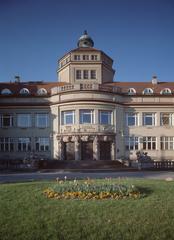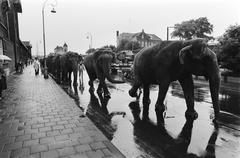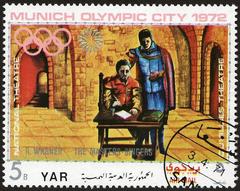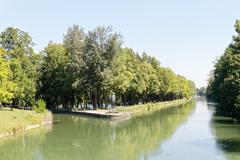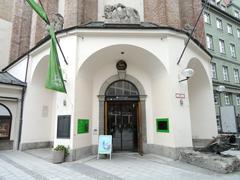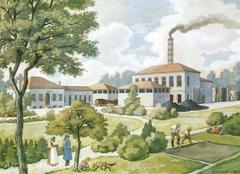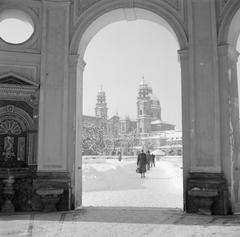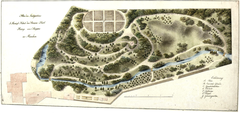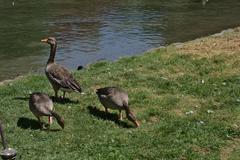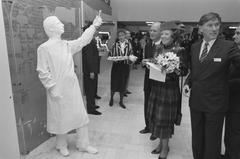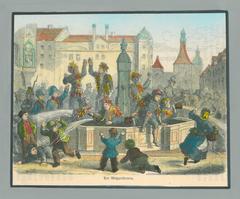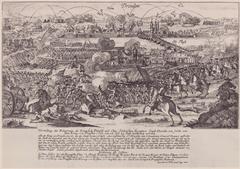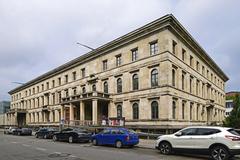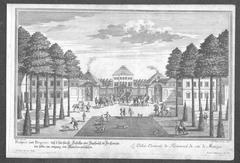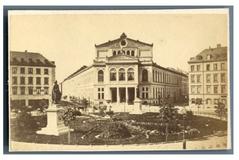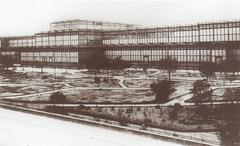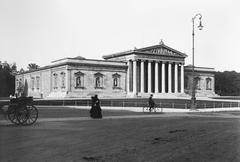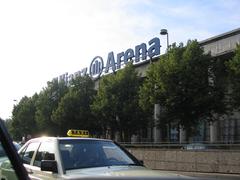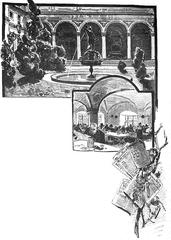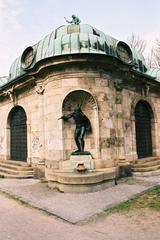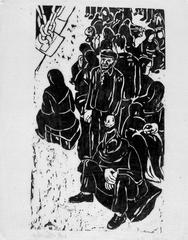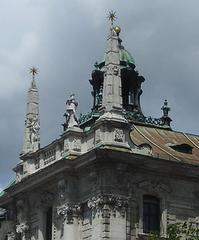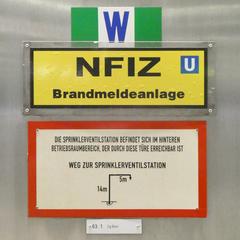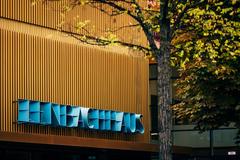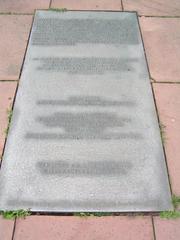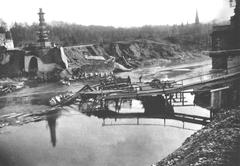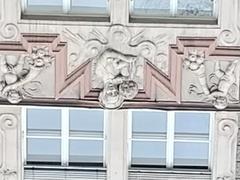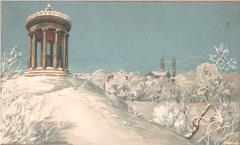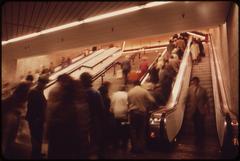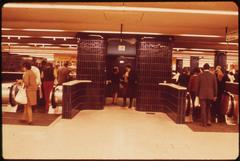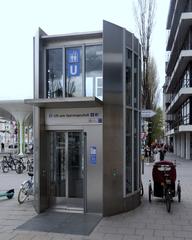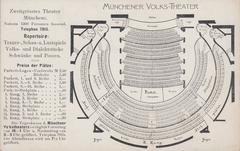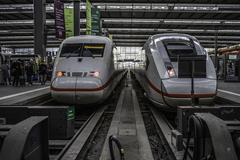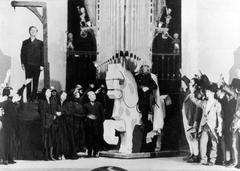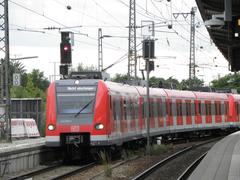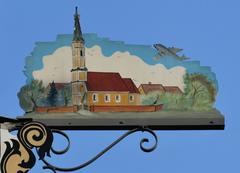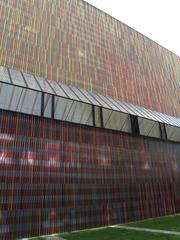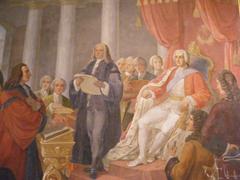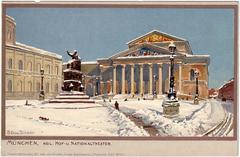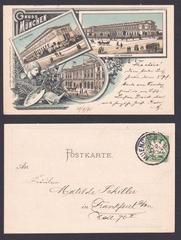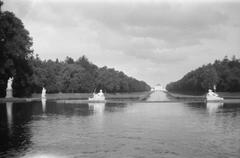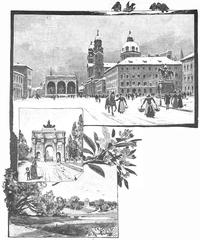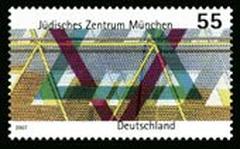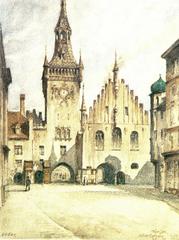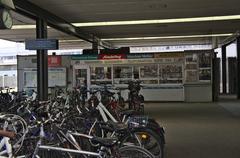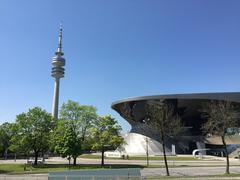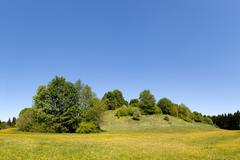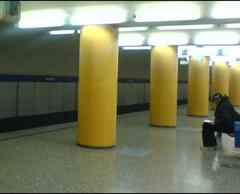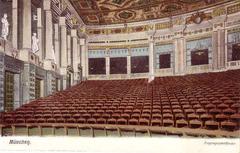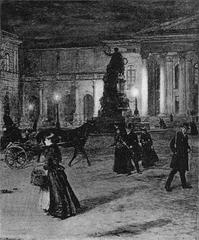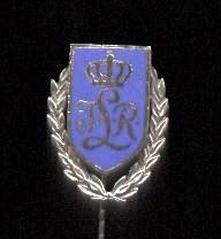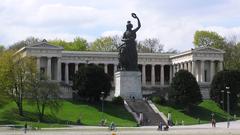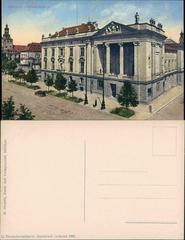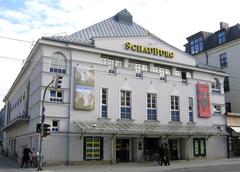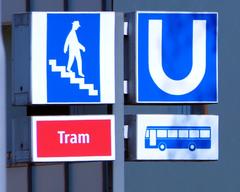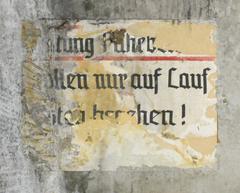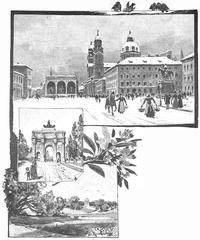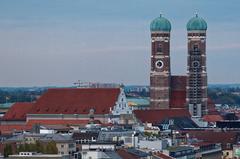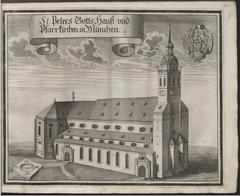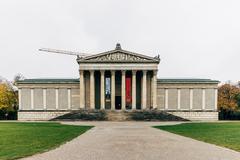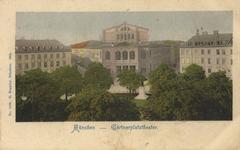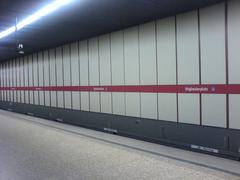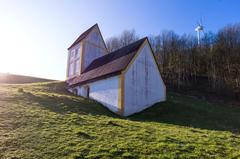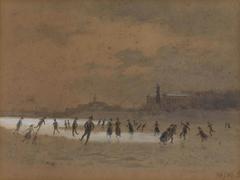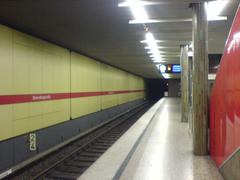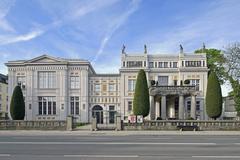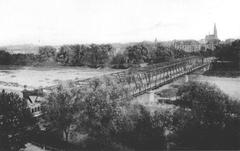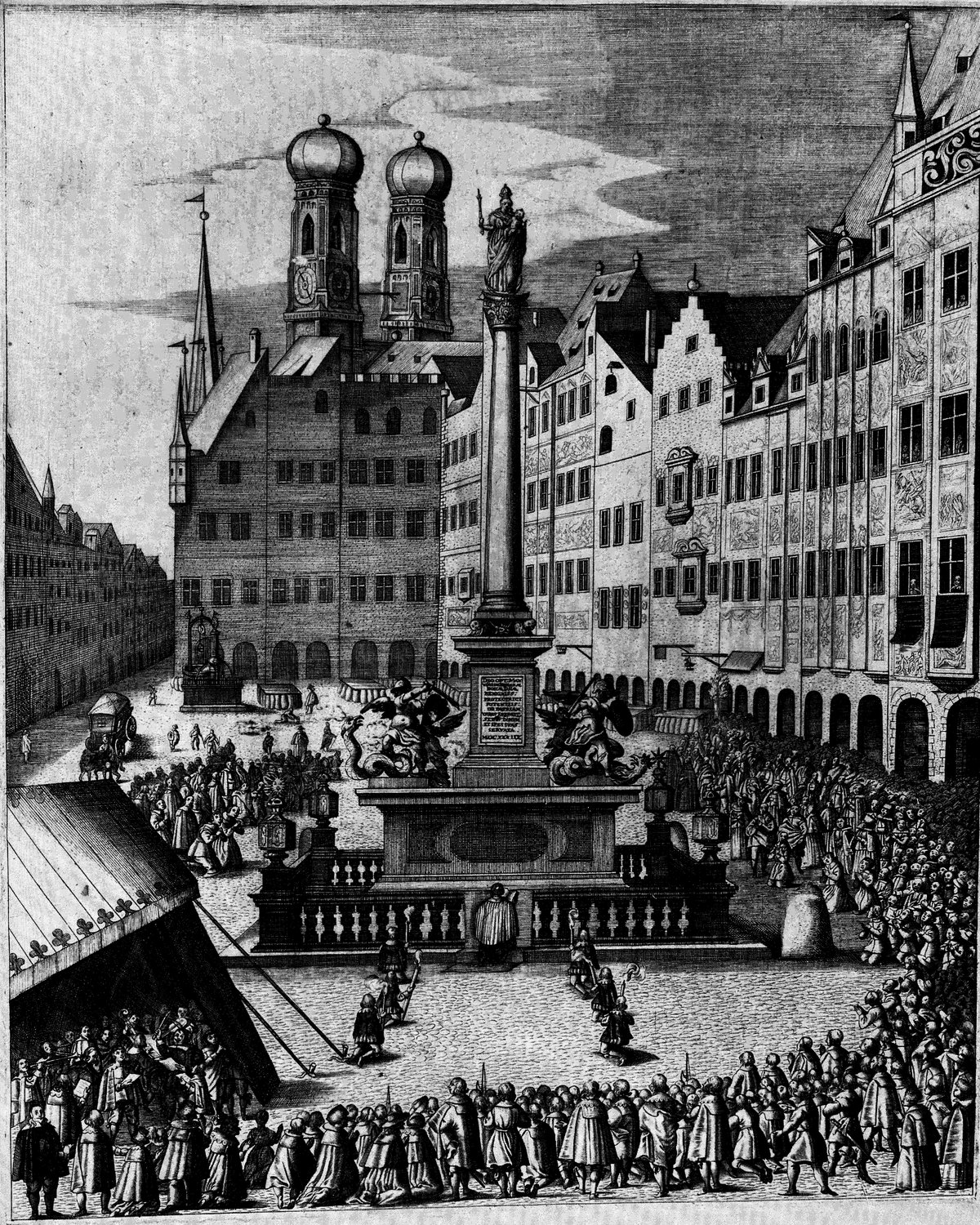
Visiting Hours, Tickets, and Historical Sites in Marienplatz, Munich
Date: 19/07/2024
Introduction
Marienplatz, the central square of Munich, Germany, has been the heart of the city since its foundation in 1158. Rich in history and cultural significance, Marienplatz has evolved from a medieval marketplace to a modern hub of activity that draws both locals and tourists alike. This guide aims to provide an in-depth look into the history, attractions, and essential visitor information for Marienplatz, ensuring a memorable and insightful experience. From the iconic New Town Hall and its famous Glockenspiel to the vibrant Christkindlmarkt during the holiday season, Marienplatz offers a unique blend of historical charm and contemporary amenities (Munich Tourist Information). Whether you’re interested in exploring medieval architecture, enjoying cultural events, or simply soaking in the bustling atmosphere, Marienplatz has something to offer for everyone.
Table of Contents
- Introduction
- Origins and Early History
- Medieval and Renaissance Periods
- 19th Century Developments
- 20th Century and World War II
- Cultural and Social Significance
- Modern-Day Marienplatz
- Visitor Information
- Nearby Attractions
- Special Events and Guided Tours
- Photographic Spots
- Conclusion
- FAQ
Discover the Rich History and Visitor’s Guide to Marienplatz in Munich
Origins and Early History
Marienplatz, originally known as Schrannenplatz, has been the heart of Munich since its foundation by Henry the Lion in 1158. It initially served as a marketplace and a venue for tournaments and festivities. The square was renamed Marienplatz (Mary’s Square) in 1638 to honor the Virgin Mary, who was believed to protect the city from a cholera epidemic. The Marian Column (Mariensäule), erected in the center of the square in 1638, commemorates this event. The column features a golden statue of the Virgin Mary standing on a crescent moon, symbolizing her role as the Queen of Heaven (Munich Tourist Information).
Medieval and Renaissance Periods
During the medieval period, Marienplatz was the focal point of Munich’s commercial and social life. The square hosted various markets, including the Viktualienmarkt, which later moved to its current location nearby. The Old Town Hall (Altes Rathaus), located on the eastern side of the square, was constructed in the late 14th century and served as the city’s administrative center. The building’s Gothic architecture, with its pointed arches and intricate carvings, reflects the artistic style of the period (Munich History).
In the Renaissance period, Marienplatz continued to thrive as a commercial hub. The square was a bustling marketplace where merchants sold goods ranging from food and textiles to crafts and luxury items. The Renaissance also brought architectural changes to the square, with the addition of new buildings and the renovation of existing ones. The Old Town Hall, for example, was modified to include Renaissance elements, such as decorative facades and ornate windows.
19th Century Developments
The 19th century was a period of significant transformation for Marienplatz. The construction of the New Town Hall (Neues Rathaus) between 1867 and 1908 marked a new era for the square. Designed by architect Georg von Hauberrisser, the New Town Hall is an example of Gothic Revival architecture, characterized by its elaborate facade, spires, and statues. The building’s central tower, standing at 85 meters, houses the famous Glockenspiel, a mechanical clock that performs daily shows depicting historical events (Neues Rathaus).
The 19th century also saw the modernization of the square’s infrastructure. Gas lighting was introduced, and the square was paved to accommodate increasing traffic. These changes reflected Munich’s growth as a major European city and its adaptation to the industrial age.
20th Century and World War II
The 20th century brought both challenges and advancements to Marienplatz. During World War II, the square and its surrounding buildings suffered extensive damage from Allied bombings. The New Town Hall, in particular, was heavily damaged, with its roof and upper floors destroyed. The post-war reconstruction efforts focused on restoring the square to its former glory while incorporating modern amenities.
In the 1970s, Marienplatz underwent further modernization with the construction of the S-Bahn and U-Bahn stations beneath the square. This development transformed Marienplatz into a major transportation hub, connecting various parts of Munich and making it more accessible to residents and tourists alike (Munich Transport).
Cultural and Social Significance
Marienplatz has always been more than just a physical space; it is a symbol of Munich’s cultural and social identity. The square hosts numerous events and celebrations throughout the year, including the famous Christkindlmarkt (Christmas Market), which attracts visitors from around the world. The market, with its festive stalls and holiday decorations, transforms the square into a winter wonderland, reflecting the city’s rich traditions and community spirit (Christkindlmarkt).
The Glockenspiel in the New Town Hall is another cultural highlight of Marienplatz. Installed in 1908, the Glockenspiel features 43 bells and 32 life-sized figures that reenact two stories from Munich’s history: the wedding of Duke Wilhelm V and the Schäfflertanz (Coopers’ Dance), a traditional dance performed to celebrate the end of a plague in the early 16th century. The Glockenspiel’s performances, which take place daily at 11 a.m. and 12 p.m., draw large crowds and are a testament to the city’s historical heritage (Glockenspiel).
Modern-Day Marienplatz
Today, Marienplatz remains the vibrant heart of Munich, blending historical charm with modern amenities. The square is a popular meeting point for locals and tourists, offering a variety of shops, cafes, and restaurants. The pedestrianization of the square in the 1970s has made it a pleasant and accessible area for strolling and sightseeing.
Marienplatz also serves as a starting point for exploring other attractions in Munich. The nearby Frauenkirche (Cathedral of Our Dear Lady), with its iconic twin towers, is one of the city’s most recognizable landmarks. The square’s central location makes it an ideal base for discovering Munich’s rich history, culture, and architecture (Frauenkirche).
Visitor Information
Planning a visit to Marienplatz? Here are some essential details to help you make the most of your trip:
-
Marienplatz Visiting Hours: Marienplatz is open 24 hours, but specific attractions like the New Town Hall and Glockenspiel have designated visiting hours. The Glockenspiel performs daily at 11 a.m. and 12 p.m., with an additional show at 5 p.m. during the summer.
-
Marienplatz Tickets: Entry to Marienplatz is free. However, guided tours that include the New Town Hall and other nearby attractions may charge a fee. It’s advisable to book tickets in advance, especially during peak tourist seasons.
-
Travel Tips: Marienplatz is easily accessible by public transportation. The S-Bahn and U-Bahn stations are located directly beneath the square, offering convenient connections to various parts of Munich. For those driving, parking options are available nearby, but using public transit is recommended to avoid traffic and parking hassles.
Nearby Attractions
-
Frauenkirche: Just a short walk from Marienplatz, this iconic cathedral with its twin towers offers stunning views of Munich from its observation deck (Frauenkirche).
-
Viktualienmarkt: A vibrant food market located a few minutes from Marienplatz, perfect for sampling local delicacies and fresh produce (Viktualienmarkt).
-
Residenz Munich: The former royal palace of the Bavarian monarchs, offering a glimpse into the opulent history of the region (Residenz Munich).
Special Events and Guided Tours
Marienplatz hosts various events throughout the year, including the Christkindlmarkt, Fasching (Carnival), and summer festivals. Guided tours are available and highly recommended for those interested in a deeper understanding of the square’s history and significance. Look for tours that include the New Town Hall, Glockenspiel, and other nearby historical sites (Munich Walking Tours).
Photographic Spots
Marienplatz offers numerous photographic opportunities. Capture the majestic New Town Hall, the bustling square, and the picturesque Marian Column. For panoramic views of Munich, head to the observation deck of the nearby Frauenkirche.
Conclusion
Marienplatz’s history is a reflection of Munich’s evolution from a medieval market town to a modern metropolis. Whether you’re interested in its rich past, cultural events, or simply enjoying the vibrant atmosphere, Marienplatz has something for everyone. Plan your visit to this iconic square and discover the heart of Munich for yourself.
For more detailed information and updates, visit the official Marienplatz website. Don’t forget to download the Audiala mobile app for guided tours and additional insights into Munich’s historical sites.
FAQ
Q: What are the Marienplatz visiting hours? A: Marienplatz is open 24 hours, but specific attractions like the New Town Hall and Glockenspiel have designated visiting hours.
Q: Is there an entry fee for Marienplatz? A: Entry to Marienplatz is free, but guided tours may charge a fee.
Q: How can I get to Marienplatz? A: Marienplatz is accessible via S-Bahn and U-Bahn stations located directly beneath the square.
Q: What events are held at Marienplatz? A: Events include the Christkindlmarkt, Fasching, and various summer festivals.
Q: Are there guided tours available? A: Yes, guided tours are available and recommended for a deeper understanding of Marienplatz’s history.
References
- Discover the Rich History and Visitor’s Guide to Marienplatz in Munich, 2024, Munich Tourist Information
- Munich History, 2024, Munich History
- Neues Rathaus, 2024, Neues Rathaus
- Munich Transport, 2024, Munich Transport
- Christkindlmarkt, 2024, Christkindlmarkt
- Glockenspiel, 2024, Glockenspiel
- Frauenkirche, 2024, Frauenkirche
- Munich Walking Tours, 2024, Munich Walking Tours
- Toy Museum Munich, 2024, Toy Museum Munich
